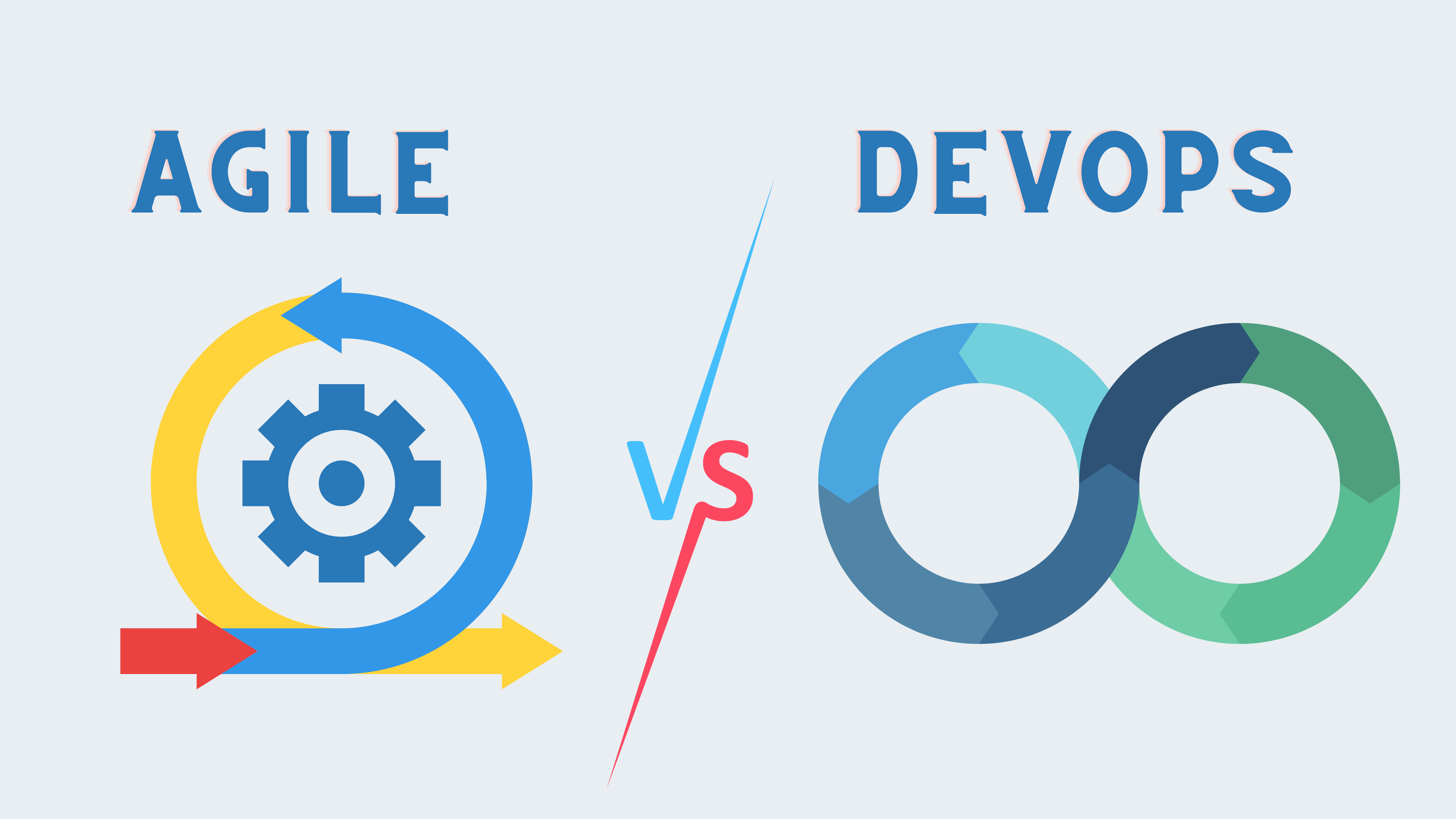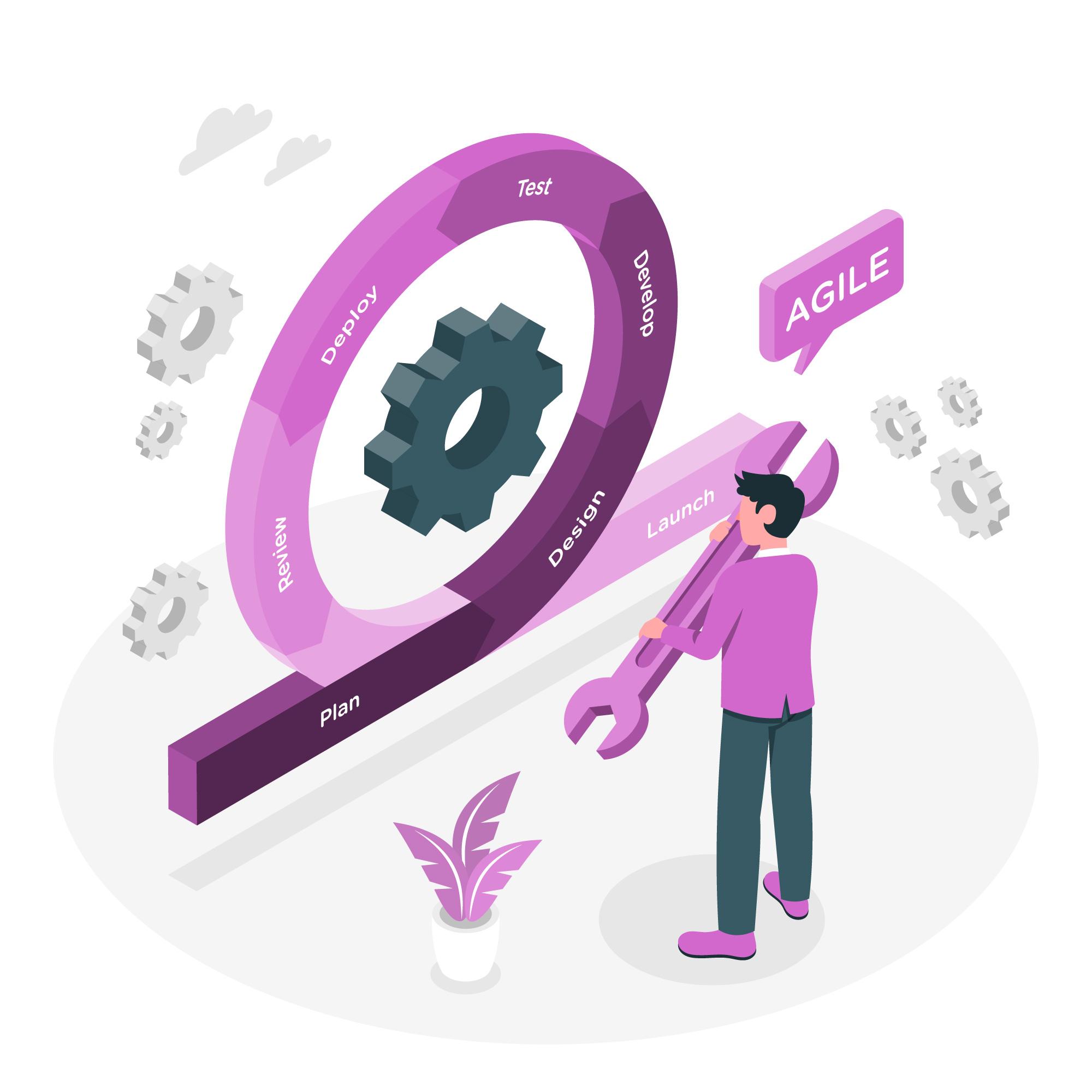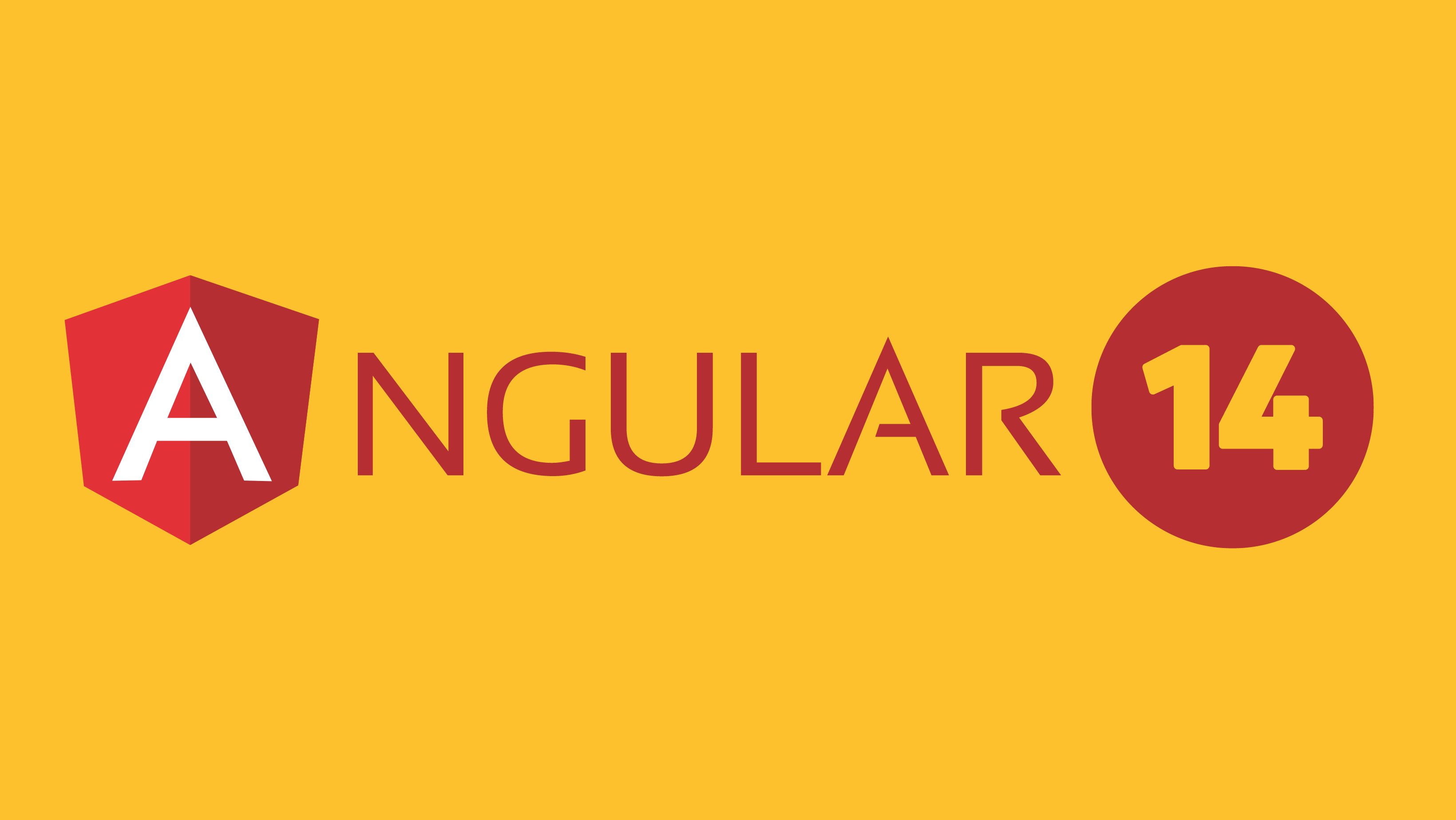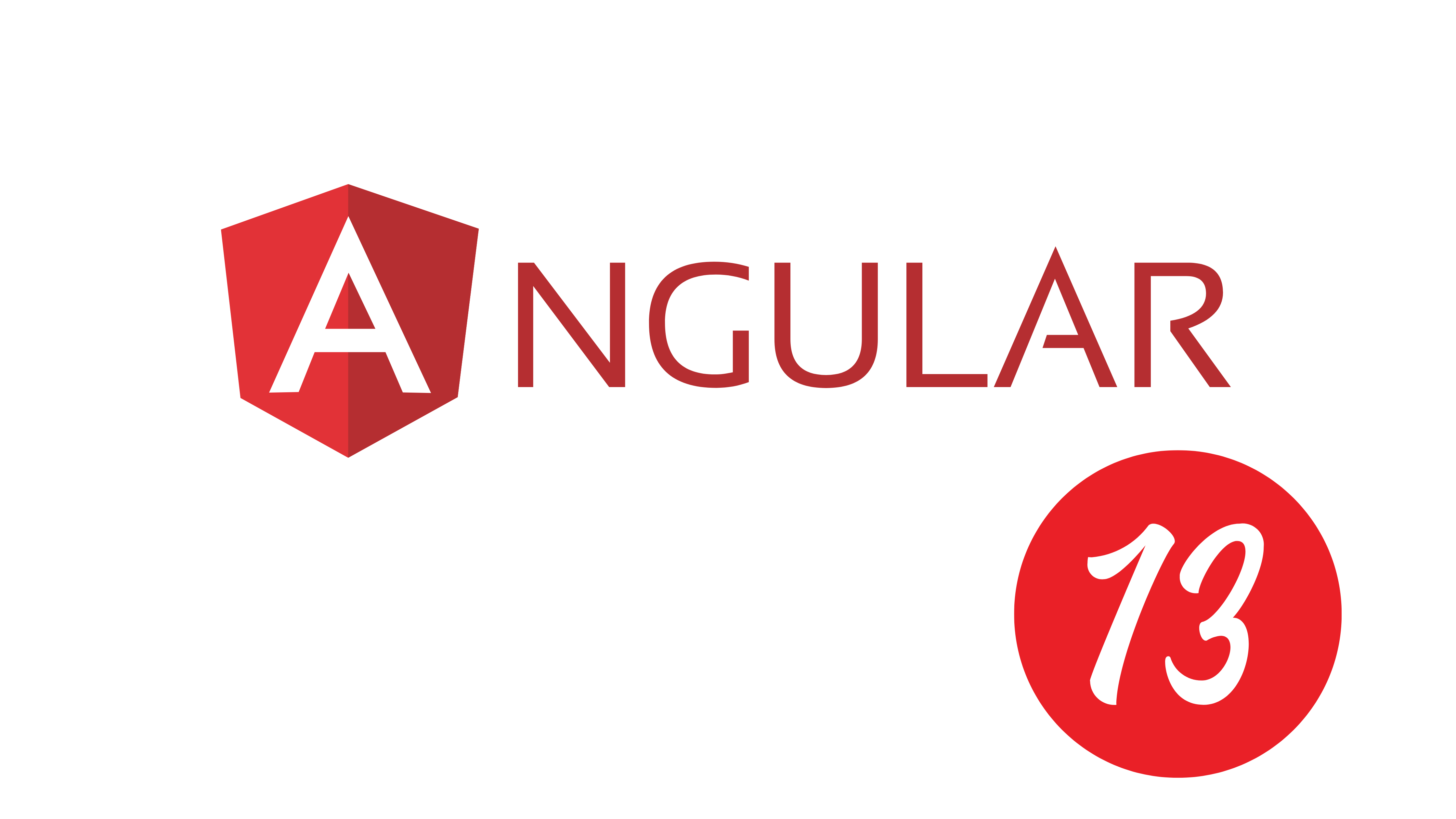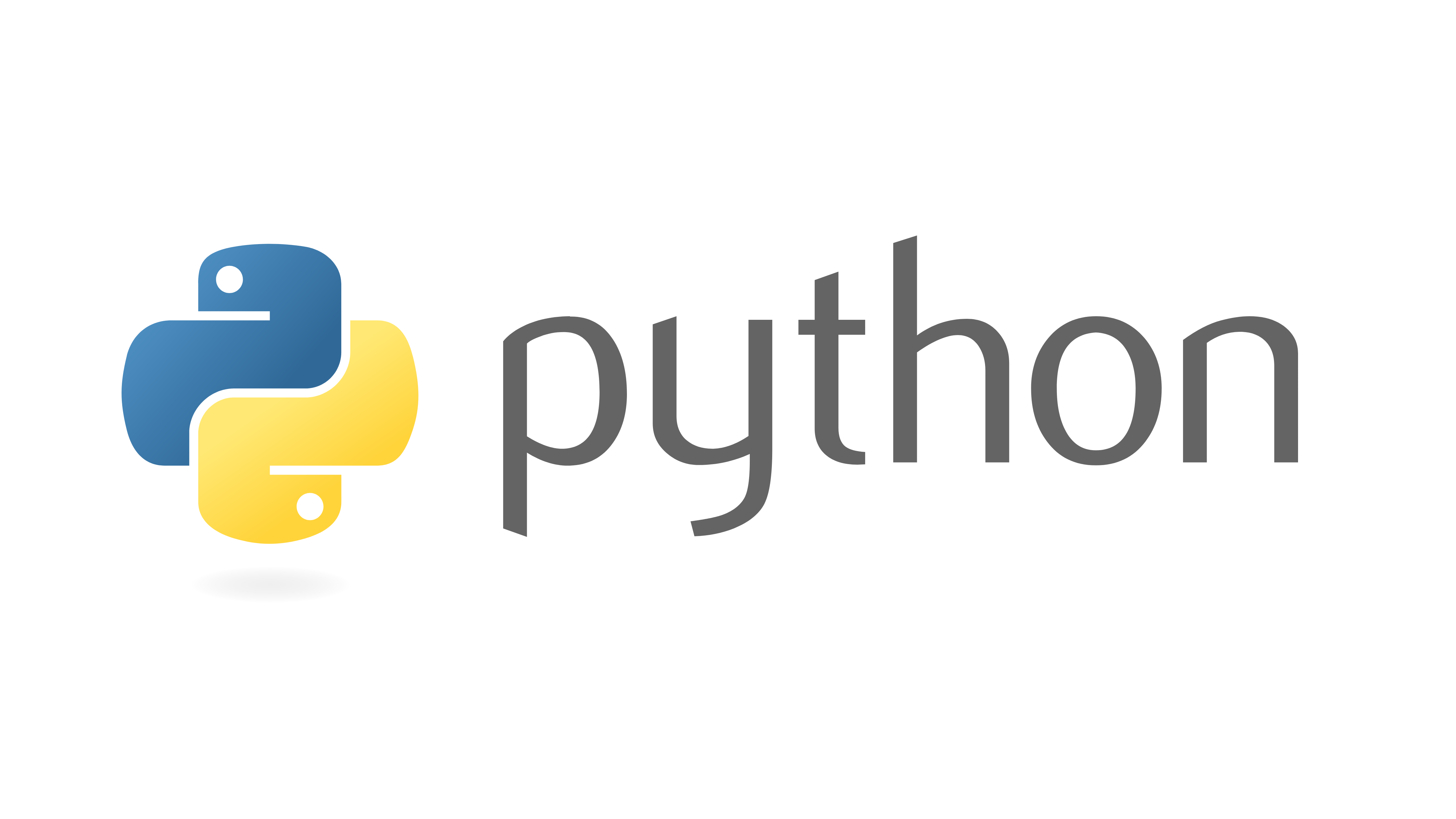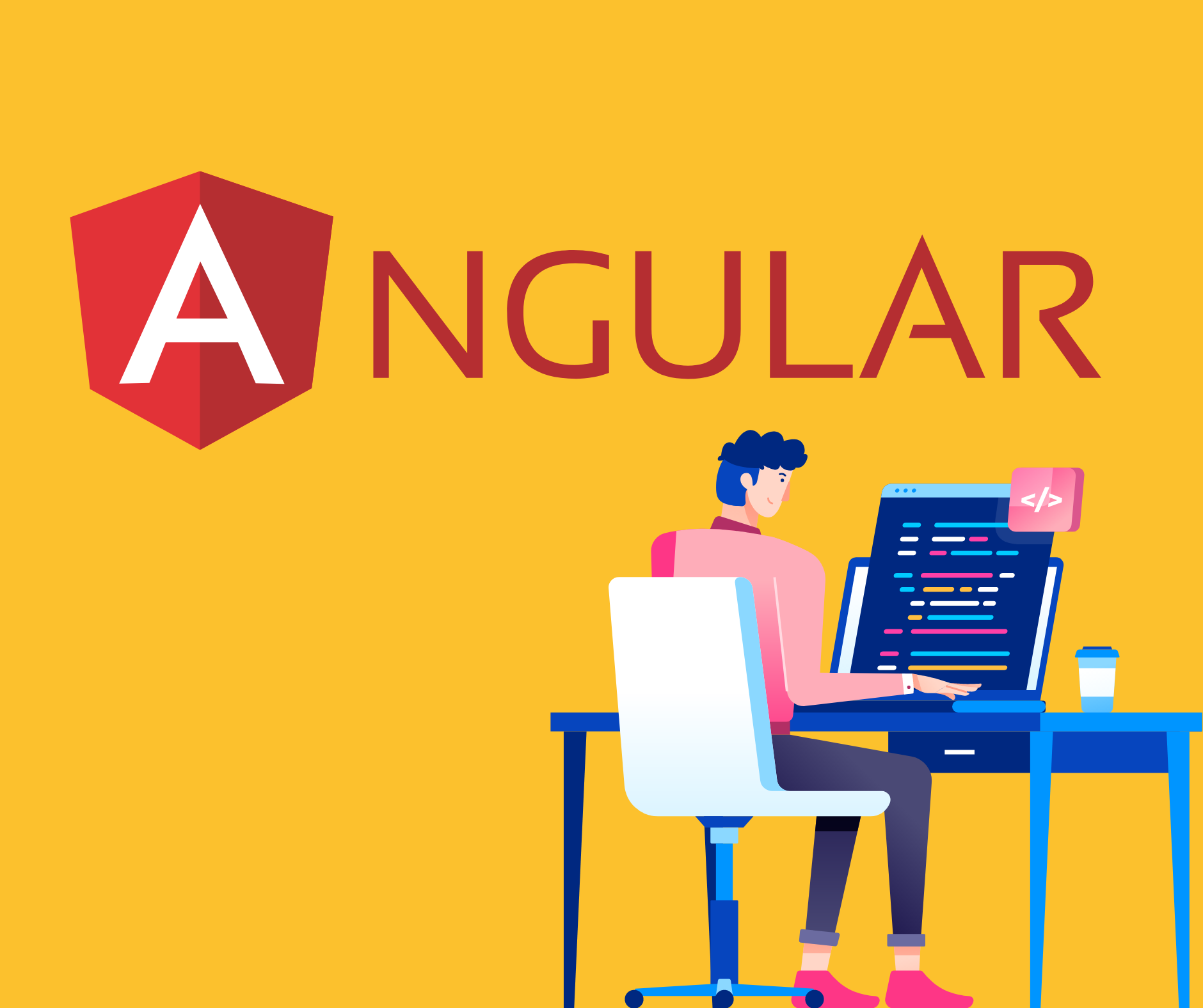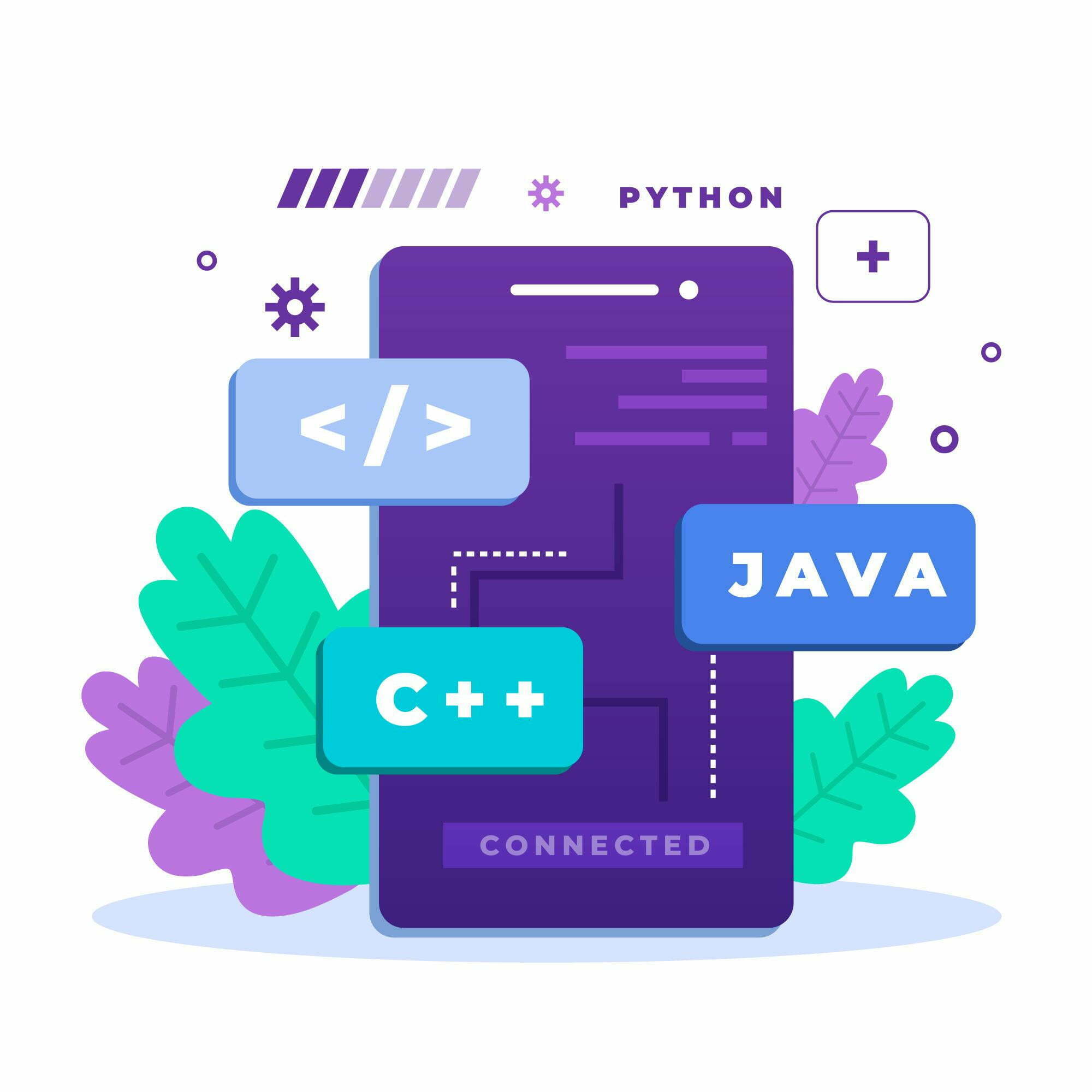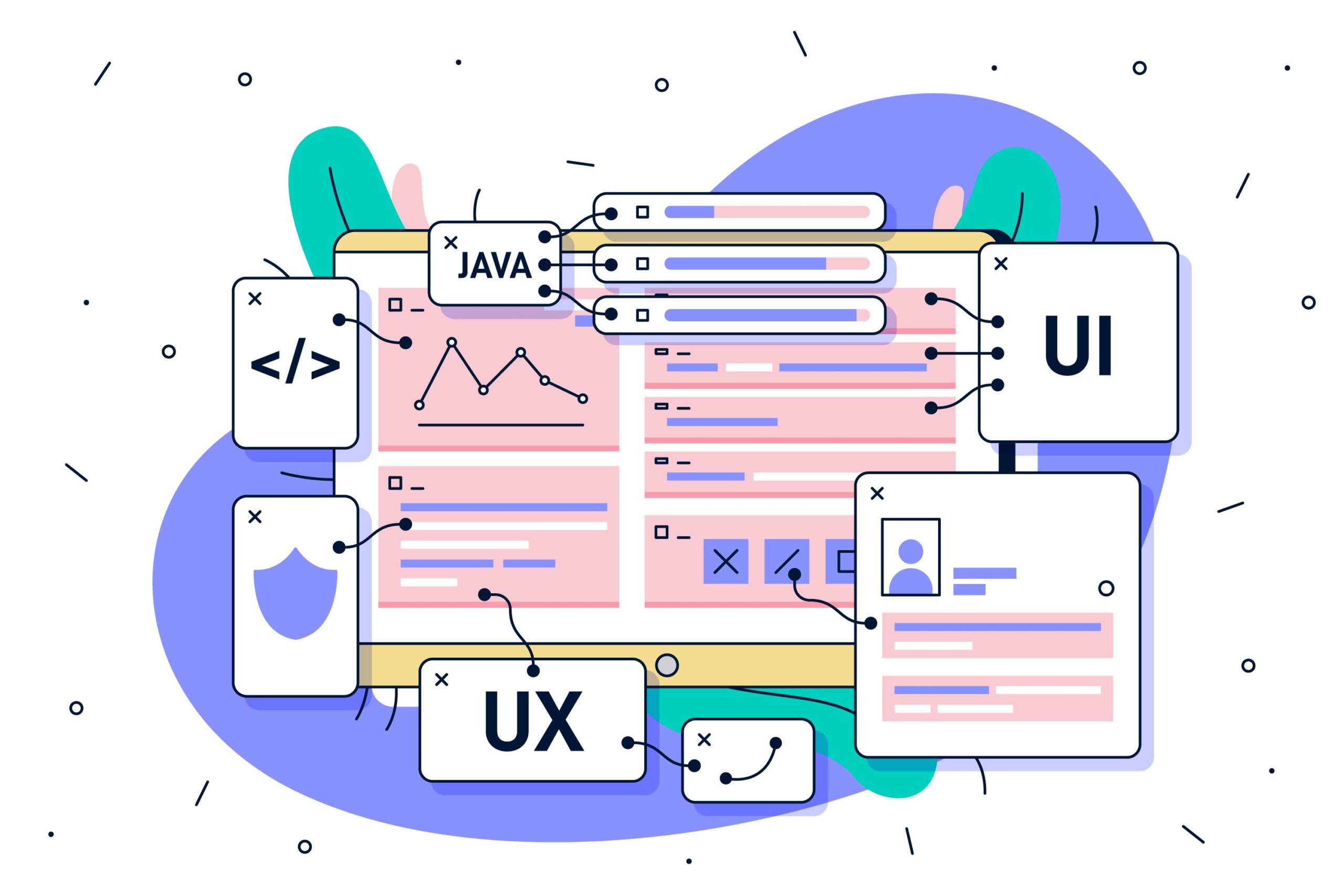Reading Time : 1 Mins
What Is Best In 2024: React Vs. Angular Vs. Flutter?
According to Precedence Research report, “The global mobile application market, which was valued at USD 196.08 billion in 2023, is projected to reach over USD 1,383.65 billion by 2033, exhibiting a significant compound annual growth rate (CAGR) of 21.55% from 2024 to 2033.”
With the popularity of cross-platform mobile applications at an all-time rise, winning over the mobile development market has become a challenging task. Certainly, Flutter and React Native have emerged as fore runners in the sphere of crafting efficient, cross-platform mobile applications.
If you want to develop apps quickly, you need to choose the right framework that provides you with the fastest time-to-market. One that is stable, user-friendly and has all the features that you are looking for.
In this article, we compare the most popular mobile application frameworks- React Native, Flutter, and Angular to help you decide on which framework to use for the development of your mobile application.
Let’s dive into the topic!
Introduction to React Native:
React Native is an open-source mobile application framework which uses JavaScript. It uses the same UI building blocks as regular iOS and Android apps. You can build apps for both the platforms with a single codebase. React Native was started as an internal Facebook project, and is now one of the most popular mobile application frameworks of late.
Instagram, Facebook, Pinterest, Tesla, Skype, etc are some of the most widely-known applications made from React Native.
Interesting Statistics on React Native:
- React Native has 9000+ contributors on GitHub
- In Stackoverflow, where there is a category of the most loved technologies, React Native has 57.9% of voices, which means that these developers will continue working with the tool
Advantages of Using React Native:
1. Maximum code reuse: With React Native, you can use the same code to deploy in both iOS and Android. It not only reduces the development effort by a huge margin, but also reduces the cost.
2. Live reload: It has an interesting feature that even native frameworks do not have, it is the live reload feature. In this, you can immediately see the results of changes that you have made to the code.
3. Modular architecture: Thanks to modular programming, the program functions can be divided into interchangeable free blocks called modules. These modules provide flexible development and build better cooperation between each of them to receive updates.
4. Strong performance: The React Native architecture bodes well for mobile devices. It leverages the Graphics Processing Unit (GPU), while the native platforms make use of the Central Processing Unit (CPU).
5. Helpful community: Created by Facebook, it is ably supported by developers around the world. When you are part of such a big community, there will be a lot of JS and native developers who will be more than happy to share their expertise, not to mention the fact that there is a huge catalogue of components that are freely available.
Disadvantages of Using React Native:
1. Lacks robust security features: Since it is an open-source framework, there are questions about its security. If you are creating apps for industries where security is of prime importance, then you are better advised not to use React Native. Otherwise, you need to provide extra security.
2. Poor memory management: React Native is not great for building intensive apps, the blame falls on JavaScript. Managing the memory becomes difficult because of the float computations which are dealt with in an inefficient manner.
3. Compatibility and debugging issues: When using React Native, you might come across issues relating to package compatibility or debugging tools. Your developers need to be extremely skillful at React Native for these issues not to negatively impact your development.
4. Complex UI: For apps that need complex gestures, animations, screen transitions, or anything that requires many interactions, React Native shouldn’t be your first choice. Developers will struggle with screens that have complicated gestures even though React Native has a gesture responder system.
Introduction to Angular:
Angular was the most popular mobile application framework for a long time. It uses TypeScript, a superset of JS which is built for bigger projects. Since TypeScript is compact when compared with JavaScript, it makes the code refactoring process easier and faster.
In Angular, you can test and debug a complete project with the help of a single tool like Jasmine, Karma, or Protractor. When dealing with complex and dynamic applications, AngularJS is only known for its moderate performance. Even though React and Flutter apps perform better than Angular apps of the same size, some new versions of the same are faster in comparison with React.
Google, Upwork, HBO, YouTube, Intel, IBM, General Motors and Microsoft Office are some of the websites that have been created with the help of Angular.
Also read: Top 10 Python Frameworks for Web Development
Interesting Statistics on Angular:
- There are almost a million companies which use Angular
- It has more than 1,300+ contributors on GitHub
- Angular plans major updates every six months
Advantages of Using Angular:
1. Consistency: Unlike React, Angular is a full-fledged responsive web design framework that makes it possible to create consistency throughout the codebase. The Angular team has developed a CLI tool that can be helpful in creating certain repeatable blocks of code from the command line.
2. Modular development structure: Since Angular is modular in nature, developers can divide code into modules. It reduces the development time and cost by a huge margin since it allows for easy organization of the app’s functionality and the creation of reusable chunks of code.
3. Maintainability: Angular supports code maintainability in many ways. When you move from one version to another, the Angular packages are also updated at the same time. Updating is possible with a single command.
4. TypeScript: Since Angular is built with TypeScript, it helps developers keep their code clean and understandable. Debugging becomes easy and so is it to maintain a large database.
Disadvantages of Using Angular:
1. Limited SEO options: Angular has limited SEO options which makes it difficult to build an application which is easy for search engines to crawl.
2. Steep learning curve: It has a complex web of modules, integrations, customization abilities, and coding languages, all of which contributes to Angular being difficult to learn.
3. Not compatible for all projects: You need to be working on a project that is appropriate in terms of size and complexity for it to be successful when working on Angular.
4. Heavy weighted framework: There are too many abstractions and features on the framework which makes it bloated, especially when you compare it with light-weight architecture like React.
Introduction to Flutter:
Flutter is a cross-platform app development framework that offers developers an easy way to build and deploy visually attractive mobile applications that are natively compiled. All of this is done using a single codebase.
It is useful to build high-quality Progressive Web Apps (PWA) which are integrated with a user’s environment, it includes offline support, installation and UX. Flutter is also useful if you are building single-page applications. It provides a web-based delivery model for existing Flutter mobile apps.
Based on Dart, an object-oriented programming language, Flutter provides its own widgets, which are drawn from its own high-performance rendering engine.
Some of the most popular apps made with Flutter are: Google Ads app, Groupon, eBay Motors app, Reflecty, and many more.
Interesting Statistics About Flutter:
- Flutter is the second most popular cross-platform mobile framework for developers across the world
- More than 100,000 apps have been launched with Flutter
- Stackoverflow says that 68.8% developers have Flutter and want to continue using it.
Advantages of Using Flutter:
1. Reduced code development time: Flutter has a ‘hot reload’ feature which allows you to see the applied changes immediately, which makes it faster. There are a lot of ready-to-use widgets which are extremely customizable.
2. Faster go-to-market speed: Since you don’t have to write platform-specific code, it is quicker than the other alternatives present. You can implement any 2D-based UI without even having to interact with a native application counterpart.
3. Community support: Google supports Flutter developers with frequent updates and fixes issues. The app’s community has also been growing in strength. There are a lot of experts who are ready to share their knowledge which makes it easy for newbies to figure out the framework.
4. Similar to native app development: The rendering of the Flutter software happens using an internal graphics engine called Skia. It allows for faster development than the other mobile frameworks. Flutter doesn’t rely on any intermediate code representations or interpretation which makes it indistinguishable from the native apps.
5. Helps attract investors: When you go to an investor seeking financial support, they would want to see a working model of your product or an MVP (Minimum Viable Product). The MVP that you build on Flutter is compatible across all the platforms and will provide you a high-quality experience.
Check out how we ensured mobile application security for a renowned credit lending institution from security attacks. Read here.
Disadvantages of Using Flutter:
1. It is a young technology: When you are using a new technology, there is always the chance that it will pivot into something that you don’t want. It is only a rare possibility though.
2. New iOS/Android features may be introduced later: The updates rolled out by iOS/Android will usually be introduced in their native SDKs.
3. Getting the platform specific feel: Even though Flutter will let you run a high performance app on both iOS and Android, it might not be completely possible to get the platform specific feel. That is something which traditionalists might have trouble accepting.
Still unable to decide which framework to finally go ahead with? Give a listen to Clarence Fernando, Senior Digital Engineering Manager at Zuci Systems, sharing some quick insights on both the cross-platform development languages in the video below.
Flutter vs React Native vs Angular: A Quick Summary
| Aspects | React Native | Angular | Flutter |
| Code Reusability | Employs a high level of code reuse between platforms. | Offers moderate code reuse, primarily for web applications. | Promotes extensive code reuse for multi-platform apps. |
| Performance | Provides good performance for most applications. | Offers good performance, optimized for web applications. | Delivers excellent performance due to Dart’s compilation. |
| Hot Reloading | Supports hot reloading, enabling real-time code changes. | Lacks built-in hot reloading functionality. | Provides hot reload feature for quick iterations. |
| Tooling | Features extensive tooling support, including IDEs, debuggers, and dev tools. | Offers extensive tooling support, including Angular CLI, IDEs, and debuggers. | Boasts developing tooling support with tools like Flutter DevTools and extensions for popular IDEs. |
| Flexibility | Offers moderate flexibility, allowing for customization of UI components and functionality. | Provides high flexibility, facilitating the creation of complex web applications. | Allows developers to build highly customized and native-like interfaces. |
We believe that this article would have helped you with choosing the right mobile framework for building apps. Each of them have its own advantages and disadvantages, so the end decision that you take should be based on your business requirements. Even though we have listed out major differences between each of these three, all of them have powerful features which can help you build brilliant mobile applications.
If you would like help with mobile application development and not want to worry about which mobile application framework to choose, Zuci is here to help you. Our flexible and modern mobile application development process is based on years of experience with which we have created processes that help us always get it right. Partner with us for your mobile application development needs and see the results for yourself.
Frequently Asked Questions
1. Which framework is more suitable for large-scale projects: React native Vs Angular Vs Flutter?
Flutter offers the convenience of a unified codebase catering to both iOS and Android platforms, making it an ideal option for large-scale mobile app projects. Its reactive framework merged with high-performance makes it particularly well-suited for the development of complex and feature-rich mobile applications.
Whereas, for large-scale web projects, particularly those with complex requirements, Angular framework stands as an ideal choice. Its important features such as dependency injection and component-based architecture and coupled with seamless integration enables early error detection and code quality, making it an excellent framework for mobile applications.
On the other hand, React Native is favoured for large-scale projects due to its code reusability across platforms, extensive community support, good performance, hot reloading for rapid iteration, and flexibility for customisation. These qualities make it well-suited for managing the complexities and challenges inherent in large-scale mobile app development projects.
2. What is the main advantage of using Flutter for mobile app development?
Flutter helps developers to create high-quality, visually appealing apps with a single codebase that runs seamlessly across multiple platforms, including iOS and Android. Flutter’s reactive framework and extensive widget library enables rapid development and ensures consistent performance and user experience across devices. Additionally, Flutter’s hot reload feature allows for quick iteration and debugging, significantly enhancing developer productivity. Overall, Flutter streamlines the app development process, reduces time to market, and provides a cost-effective solution for building native-like mobile applications.

I write about fintech, data, and everything around it | Assistant Marketing Manager @ Zuci Systems.
Share This Blog, Choose Your Platform!
Related Posts





